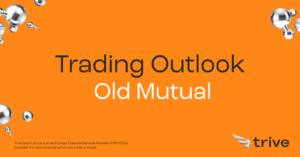
The USDCAD currency pair has encountered a recent downward trajectory, primarily swayed by the Greenback’s weakening stance in the markets.
Last week witnessed a 1.57% decline, attributed to a dovish shift by the Federal Reserve. The Fed’s optimism about curbing inflation and stabilizing the labour market sparked hints of potential rate cuts at the start of the upcoming year, amplifying market expectations of a 66.7% likelihood of reduced rates post-March.
Today’s focus shifts to Canada’s inflation data, which is anticipated to decrease by 20 basis points to 2.9%, according to Statistics Canada. However, the pivotal event of the week is the eagerly awaited PCE Index—the Federal Reserve’s preferred inflation indicator—scheduled for release on Friday. Forecasts indicate a further deceleration in U.S. inflation, tapering to 2.8%. Should this closely align with the 2% target, it could exert significant pressure on the Greenback, potentially increasing the likelihood of imminent rate cuts. Such a scenario might pave the way for an extended descent of the USDCAD pair.

Technical
In Monday’s trading session, the USDCAD pair broke free from a three-day losing streak, nudging upwards by a modest 17 basis points. However, the broader trend leans towards a downtrend, notably marked by a breach below both an ascending channel and the 100-day moving average on the daily timeframe.
At the recent high of 1.36066, a resistance level emerged following a minor rally that saw the pair briefly converging with the 100-day moving average before succumbing to downward pressures. Presently, the pair finds itself at a critical juncture, aligning with a major support level at 1.33720, originating from the Greenback’s rally back in September.
The current oversold conditions at this support level hint at the potential for a reversal. If bullish sentiment prevails, triggering a rebound, the 1.36066 level could act as an area of interest, signalling upside momentum favouring the Greenback against the Canadian Dollar.
Conversely, a substantial breakdown with heightened trading volumes below this level could signify the dominance of bearish forces, opening the door to further downside movements. In such a scenario, the focus might shift to the next significant support point at 1.31511, formed back in July.
Summary
The USDCAD pair stands at a pivotal juncture, swayed by dovish Fed sentiments and economic data. With hints of potential rate cuts looming, upcoming inflation reports hold immense sway over the Greenback’s fate. Technical indicators underscore a battleground scenario, with key levels dictating possible reversals or extensions in this tug-of-war between the currencies.
Sources: CME, Statistics Canada, U.S. Bureau of Economic Analysis, Reuters, TradingView
Piece Written By Nkosilathi Dube, Trive Financial Market Analyst
Disclaimer: Trive South Africa (Pty) Ltd, Registration number 2005/011130/07, and an Authorised Financial Services Provider in terms of the Financial Advisory and Intermediary Services Act 2002 (FSP No. 27231). Any analysis/data/opinion contained herein are for informational purposes only and should not be considered advice or a recommendation to invest in any security. The content herein was created using proprietary strategies based on parameters that may include price, time, economic events, liquidity, risk, and macro and cyclical analysis. Securities involve a degree of risk and are volatile instruments. Market and economic conditions are subject to sudden change, which may have a material impact on the outcome of financial instruments and may not be suitable for all investors. When trading or investing in securities or alternative products, the value of the product can increase or decrease meaning your investment can increase or decrease in value. Past performance is not an indication of future performance. Trive South Africa (Pty) Ltd, and its employees assume no liability for any loss or damage (direct, indirect, consequential, or inconsequential) that may be suffered from using or relying on the information contained herein. Please consider the risks involved before you trade or invest.




